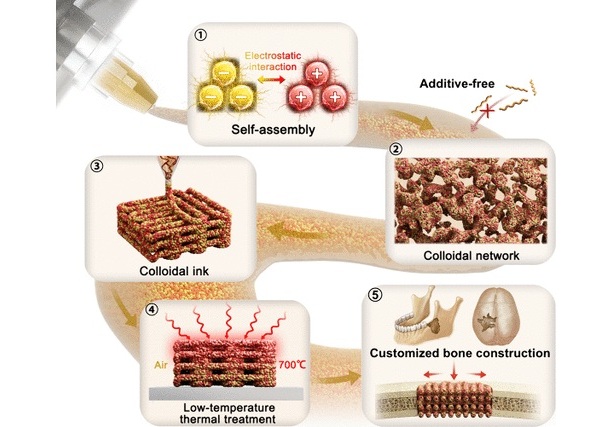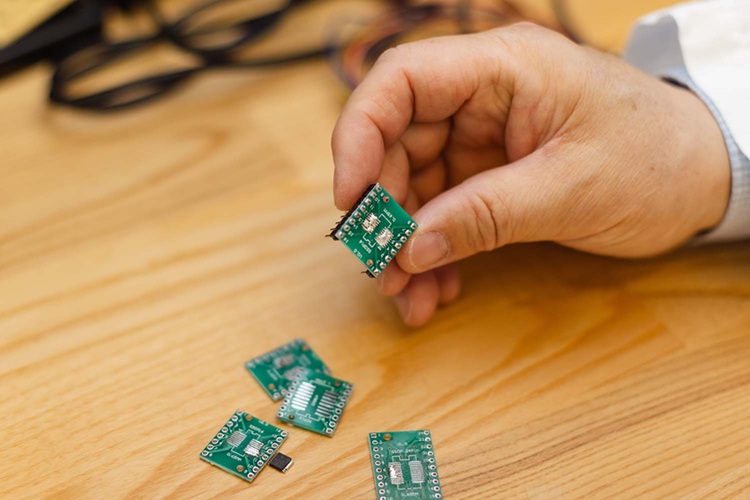Eli Lilly's Neutralizing Antibody Could Significantly Reduce Risk of Contracting Symptomatic COVID-19, Finds Major Study
|
By HospiMedica International staff writers Posted on 22 Jan 2021 |

Image: Eli Lilly`s Neutralizing Antibody Could Significantly Reduce Risk of Contracting Symptomatic COVID-19, Finds Major Study (Photo courtesy of Eli Lilly and Company)
Eli Lilly and Company’s (Indianapolis, Ind, USA) neutralizing antibody bamlanivimab (LY-CoV555) could significantly reduce the risk of contracting symptomatic COVID-19, according to a major study.
Bamlanivimab is authorized for emergency use by the US Food and Drug Administration for the treatment of mild to moderate COVID-19 in high-risk patients. Bamlanivimab significantly reduced the risk of contracting symptomatic COVID-19 among residents and staff of long-term care facilities, according to the Phase 3 BLAZE-2 COVID-19 prevention trial - conducted in partnership with the National Institute of Allergy and Infectious Diseases (NIAID), part of the National Institutes of Health (NIH), and the COVID-19 Prevention Network (CoVPN).
The trial enrolled residents and staff at skilled nursing and assisted living facilities, commonly referred to as nursing homes, across the US. The 965 participants who tested negative for the SARS-CoV-2 virus at baseline (299 residents and 666 staff) were included in the analysis of primary and key secondary endpoints for assessing prevention, while the 132 participants (41 residents and 91 staff) who tested positive for the virus at baseline were included in exploratory analyses for assessing treatment, adding to the growing body of evidence for treatment with bamlanivimab. All participants were randomized to receive either 4,200 mg of bamlanivimab or placebo. After all participants reached 8 weeks of follow-up, there was a significantly lower frequency of symptomatic COVID-19 (the primary endpoint) in the bamlanivimab treatment arm versus placebo (odds ratio 0.43, p=0.00021). Results for all key secondary endpoints also reached statistical significance in both the overall and resident populations.
For the pre-specified subgroup of nursing home residents, there was also a significantly lower frequency of symptomatic COVID-19 in those treated with bamlanivimab versus placebo in this important population (odds ratio 0.20; p=0.00026). These results suggest that residents randomized to bamlanivimab have up to an 80% lower risk of contracting COVID-19 versus residents in the same facility randomized to placebo. Results from exploratory analyses of viral load in the treatment group were consistent with previously disclosed data from BLAZE-1 evaluating bamlanivimab as an outpatient treatment for recently diagnosed COVID-19. Among the 299 residents in the prevention group, there were four deaths attributed to COVID-19 at the time of death, and all occurred in the placebo arm. There were no COVID-19 attributed deaths in the bamlanivimab arm. Among the 41 residents in the treatment group, there were four deaths, and all occurred in the placebo arm with none in the bamlanivimab arm. Over the entire trial, there were a total of 16 deaths reported, including deaths not related to COVID-19, and all deaths were residents (11 deaths in the placebo arm and five in the bamlanivimab arm).
"We are exceptionally pleased with these positive results, which showed bamlanivimab was able to help prevent COVID-19, substantially reducing symptomatic disease among nursing home residents, some of the most vulnerable members of our society," said Daniel Skovronsky, M.D., Ph.D., Lilly's chief scientific officer and president of Lilly Research Laboratories. "These data provide important additional clinical evidence regarding the use of bamlanivimab to fight COVID-19 and strengthen our conviction that monoclonal antibodies such as bamlanivimab can play a critical role in turning the tide of this pandemic. We're glad bamlanivimab is already available as a treatment for patients at high risk for progressing to severe COVID-19 illness or hospitalization, including those in nursing homes, and look forward to working with regulators to explore expanding the emergency use authorization to prevent the spread of COVID-19 in these facilities."
"The results of this innovative study further support the belief that bamlanivimab – and potentially other monoclonal antibodies – can reduce symptoms and may even prevent COVID-19," said Myron S. Cohen, M.D., CoVPN co-principal investigator and director of the Institute for Global Health and Infectious Diseases at the University of North Carolina at Chapel Hill. "The antiviral activity seen with bamlanivimab treatment emphasizes the importance of early intervention to help counter the devastating impact the virus has had in this vulnerable population and other high-risk patients."
Related Links:
Eli Lilly and Company
Bamlanivimab is authorized for emergency use by the US Food and Drug Administration for the treatment of mild to moderate COVID-19 in high-risk patients. Bamlanivimab significantly reduced the risk of contracting symptomatic COVID-19 among residents and staff of long-term care facilities, according to the Phase 3 BLAZE-2 COVID-19 prevention trial - conducted in partnership with the National Institute of Allergy and Infectious Diseases (NIAID), part of the National Institutes of Health (NIH), and the COVID-19 Prevention Network (CoVPN).
The trial enrolled residents and staff at skilled nursing and assisted living facilities, commonly referred to as nursing homes, across the US. The 965 participants who tested negative for the SARS-CoV-2 virus at baseline (299 residents and 666 staff) were included in the analysis of primary and key secondary endpoints for assessing prevention, while the 132 participants (41 residents and 91 staff) who tested positive for the virus at baseline were included in exploratory analyses for assessing treatment, adding to the growing body of evidence for treatment with bamlanivimab. All participants were randomized to receive either 4,200 mg of bamlanivimab or placebo. After all participants reached 8 weeks of follow-up, there was a significantly lower frequency of symptomatic COVID-19 (the primary endpoint) in the bamlanivimab treatment arm versus placebo (odds ratio 0.43, p=0.00021). Results for all key secondary endpoints also reached statistical significance in both the overall and resident populations.
For the pre-specified subgroup of nursing home residents, there was also a significantly lower frequency of symptomatic COVID-19 in those treated with bamlanivimab versus placebo in this important population (odds ratio 0.20; p=0.00026). These results suggest that residents randomized to bamlanivimab have up to an 80% lower risk of contracting COVID-19 versus residents in the same facility randomized to placebo. Results from exploratory analyses of viral load in the treatment group were consistent with previously disclosed data from BLAZE-1 evaluating bamlanivimab as an outpatient treatment for recently diagnosed COVID-19. Among the 299 residents in the prevention group, there were four deaths attributed to COVID-19 at the time of death, and all occurred in the placebo arm. There were no COVID-19 attributed deaths in the bamlanivimab arm. Among the 41 residents in the treatment group, there were four deaths, and all occurred in the placebo arm with none in the bamlanivimab arm. Over the entire trial, there were a total of 16 deaths reported, including deaths not related to COVID-19, and all deaths were residents (11 deaths in the placebo arm and five in the bamlanivimab arm).
"We are exceptionally pleased with these positive results, which showed bamlanivimab was able to help prevent COVID-19, substantially reducing symptomatic disease among nursing home residents, some of the most vulnerable members of our society," said Daniel Skovronsky, M.D., Ph.D., Lilly's chief scientific officer and president of Lilly Research Laboratories. "These data provide important additional clinical evidence regarding the use of bamlanivimab to fight COVID-19 and strengthen our conviction that monoclonal antibodies such as bamlanivimab can play a critical role in turning the tide of this pandemic. We're glad bamlanivimab is already available as a treatment for patients at high risk for progressing to severe COVID-19 illness or hospitalization, including those in nursing homes, and look forward to working with regulators to explore expanding the emergency use authorization to prevent the spread of COVID-19 in these facilities."
"The results of this innovative study further support the belief that bamlanivimab – and potentially other monoclonal antibodies – can reduce symptoms and may even prevent COVID-19," said Myron S. Cohen, M.D., CoVPN co-principal investigator and director of the Institute for Global Health and Infectious Diseases at the University of North Carolina at Chapel Hill. "The antiviral activity seen with bamlanivimab treatment emphasizes the importance of early intervention to help counter the devastating impact the virus has had in this vulnerable population and other high-risk patients."
Related Links:
Eli Lilly and Company
Latest COVID-19 News
- Low-Cost System Detects SARS-CoV-2 Virus in Hospital Air Using High-Tech Bubbles
- World's First Inhalable COVID-19 Vaccine Approved in China
- COVID-19 Vaccine Patch Fights SARS-CoV-2 Variants Better than Needles
- Blood Viscosity Testing Can Predict Risk of Death in Hospitalized COVID-19 Patients
- ‘Covid Computer’ Uses AI to Detect COVID-19 from Chest CT Scans
- MRI Lung-Imaging Technique Shows Cause of Long-COVID Symptoms
- Chest CT Scans of COVID-19 Patients Could Help Distinguish Between SARS-CoV-2 Variants
- Specialized MRI Detects Lung Abnormalities in Non-Hospitalized Long COVID Patients
- AI Algorithm Identifies Hospitalized Patients at Highest Risk of Dying From COVID-19
- Sweat Sensor Detects Key Biomarkers That Provide Early Warning of COVID-19 and Flu
- Study Assesses Impact of COVID-19 on Ventilation/Perfusion Scintigraphy
- CT Imaging Study Finds Vaccination Reduces Risk of COVID-19 Associated Pulmonary Embolism
- Third Day in Hospital a ‘Tipping Point’ in Severity of COVID-19 Pneumonia
- Longer Interval Between COVID-19 Vaccines Generates Up to Nine Times as Many Antibodies
- AI Model for Monitoring COVID-19 Predicts Mortality Within First 30 Days of Admission
- AI Predicts COVID Prognosis at Near-Expert Level Based Off CT Scans
Channels
Critical Care
view channel
Handheld Sensor Could Replace Blood Tests for Health Monitoring
Dietary assessments today often rely on food diaries and self-reporting, which are prone to inaccuracies, or invasive blood tests that are costly and time-consuming. Detecting nutrient deficiencies, age-related... Read more
3D-Printed Carbon Nanotube Sensors to Enable Smart Health Monitoring
Polymer-based conductive nanocomposites are highly promising for use in wearable electronics and smart health monitoring. However, carbon nanotubes (CNTs) often agglomerate, making uniform dispersion difficult... Read more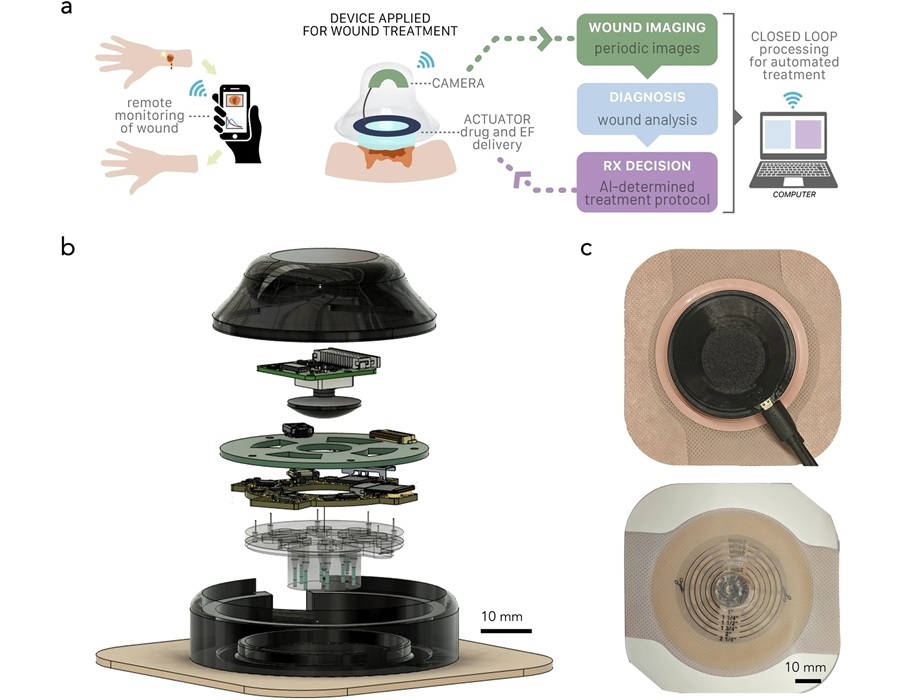
Wearable ‘Microscope in a Bandage’ Fastens Wound Healing
Wound healing is a complex biological process that moves through stages, including clotting, immune response, scabbing, and scarring. For many patients, especially those in remote areas or with limited... Read more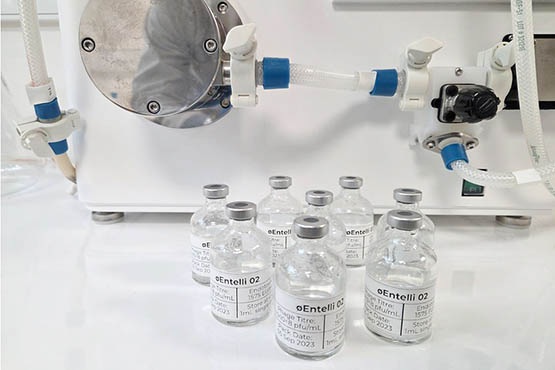
Virus Cocktail to Combat Superbugs Offers New Precision Medicine Approach for Hospitals Battling AMR
Antimicrobial resistance is one of the most pressing challenges in modern medicine, making once-treatable infections increasingly lethal. Enterobacter infections, for example, are difficult to treat and... Read moreSurgical Techniques
view channel
Robot-Assisted Bronchoscope Diagnoses Tiniest and Hardest to Reach Lung Tumors
Lung cancer is one of the deadliest cancers in Europe, killing around a quarter of a million people annually. Survival rates are much higher when tumors are diagnosed at an early stage, but the tiniest... Read more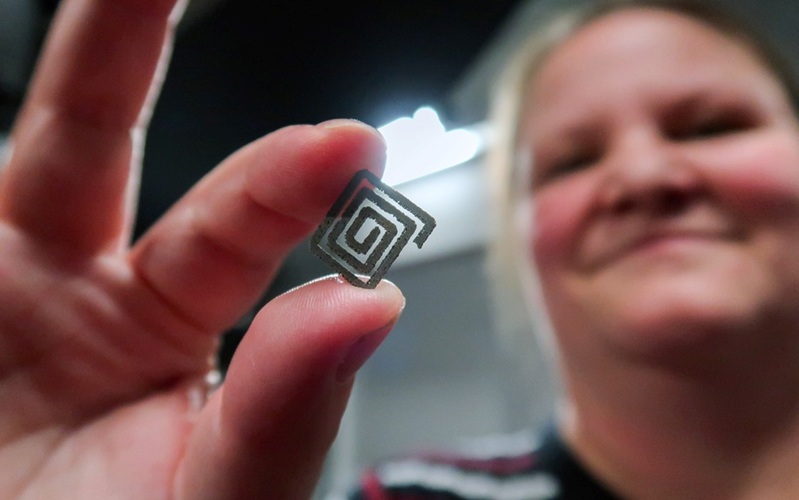
Diamond-Titanium Device Paves Way for Smart Implants that Warn of Disease Progression
Medical implants such as stents, prosthetics, and drug-release systems often rely on batteries that take up space, wear out, and eventually require replacement surgery. These limitations increase risks... Read morePatient Care
view channel
Revolutionary Automatic IV-Line Flushing Device to Enhance Infusion Care
More than 80% of in-hospital patients receive intravenous (IV) therapy. Every dose of IV medicine delivered in a small volume (<250 mL) infusion bag should be followed by subsequent flushing to ensure... Read more
VR Training Tool Combats Contamination of Portable Medical Equipment
Healthcare-associated infections (HAIs) impact one in every 31 patients, cause nearly 100,000 deaths each year, and cost USD 28.4 billion in direct medical expenses. Notably, up to 75% of these infections... Read more
Portable Biosensor Platform to Reduce Hospital-Acquired Infections
Approximately 4 million patients in the European Union acquire healthcare-associated infections (HAIs) or nosocomial infections each year, with around 37,000 deaths directly resulting from these infections,... Read moreFirst-Of-Its-Kind Portable Germicidal Light Technology Disinfects High-Touch Clinical Surfaces in Seconds
Reducing healthcare-acquired infections (HAIs) remains a pressing issue within global healthcare systems. In the United States alone, 1.7 million patients contract HAIs annually, leading to approximately... Read moreHealth IT
view channel
Printable Molecule-Selective Nanoparticles Enable Mass Production of Wearable Biosensors
The future of medicine is likely to focus on the personalization of healthcare—understanding exactly what an individual requires and delivering the appropriate combination of nutrients, metabolites, and... Read moreBusiness
view channel
Philips and Masimo Partner to Advance Patient Monitoring Measurement Technologies
Royal Philips (Amsterdam, Netherlands) and Masimo (Irvine, California, USA) have renewed their multi-year strategic collaboration, combining Philips’ expertise in patient monitoring with Masimo’s noninvasive... Read more
B. Braun Acquires Digital Microsurgery Company True Digital Surgery
The high-end microsurgery market in neurosurgery, spine, and ENT is undergoing a significant transformation. Traditional analog microscopes are giving way to digital exoscopes, which provide improved visualization,... Read more
CMEF 2025 to Promote Holistic and High-Quality Development of Medical and Health Industry
The 92nd China International Medical Equipment Fair (CMEF 2025) Autumn Exhibition is scheduled to be held from September 26 to 29 at the China Import and Export Fair Complex (Canton Fair Complex) in Guangzhou.... Read more











